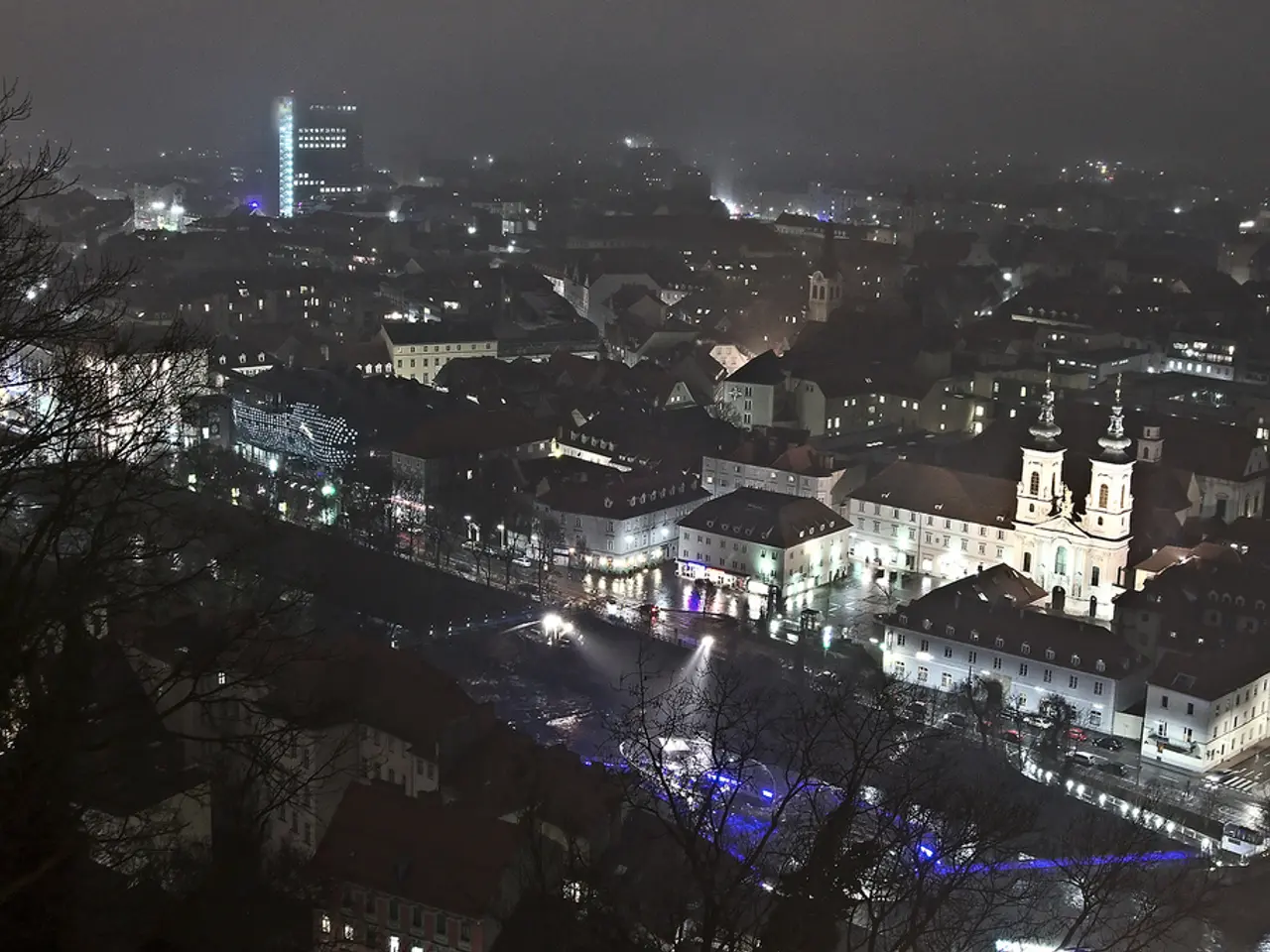The Strategy for Enhancing Life Quality for People and Fauna in the Rhön through Darkness
The Rhön region in Germany is embracing a unique initiative called "Lights out - Stars on," which is proving to be a win-win for both nature and humans. This action, aimed at reducing light pollution, is protecting the natural night environment and enhancing opportunities for stargazing and astronomy learning experiences.
The Rhön has been recognised as an International Dark Sky Park for eleven years, and this status is being utilised to its full potential. Touristically, the Rhön benefits from the star park and the star park weeks, with many offers selling out. Every summer, the Rhön Sternenpark weeks draw attention to the beautiful dark nights in the Rhön, with a wide range of events and guided tours offered across state borders.
Eleven stargazing spots have been set up in the Rhoen for observing the night sky. These stargazing spots feature information boards, a Polaris finder, a stabiliser for binoculars, and a rotating star chart. One such spot is located in the Rhonwald adventure world near Kaltenwestheim, featuring a children's star park with interactive astronomy stations. Another can be found on the 670-meter-high Glasberg near Dermbach, with a movable wave lounger for comfortable stargazing.
For nature, this means less disruption to nocturnal animals and ecosystems. Artificial light can interfere with animal behaviours and habitats, causing stress, driving them out of their habitats, blinding them, and attracting them to the light where they perish. Insects, too, need darkness at night, and garden lighting can harm them. Some communities in the Thuringian Forest have used downward-facing bell lights and partially turned off streetlights, but there are still issues where not-so-smart lighting was used.
A planned industrial park in the Chilean Atacama could severely damage the astronomical research of the European Southern Observatory due to light pollution. This underscores the importance of managing light pollution not just for local environments, but for global scientific research as well.
For humans, the reduction in light pollution allows people to see the stars, planets, and distant galaxies much more clearly. This enhances opportunities for stargazing and astronomy learning experiences. Sabine Frank, coordinator of the Rhön Dark Sky Park, compares artificial light to noise as harmful environmental factors. However, she sees the issue of security differently, stating that people feel unsafe mainly when they are alone, regardless of whether it's light or dark.
Local authorities and the Rhön Biosphere Reserve administration collaborate to maintain this protection, providing designated areas with star charts, telescope stands, and educational information, which enable visitors to engage more deeply with the natural night sky even during the daytime.
The benefits of the "Lights out - Stars on" action extend beyond the Rhön. Chinese researchers have discovered that nighttime street lighting can make tree leaves inedible for insects, contributing to insect decline. Excessive light pollution can increase the risk of Alzheimer's, especially in younger people. In Tann, lights are turned off every day from 23:00 to 4:00, with no increase in break-ins, accidents, or difficulties for emergency services and firefighters.
In conclusion, the benefits of the "Lights out - Stars on" action in the Rhön region include an ecological benefit, a cultural/educational benefit, and a tourism and recreation benefit. The ecological benefit comes from the protection of nocturnal wildlife and natural ecosystems from disruptive artificial light. The cultural/educational benefit stems from improved visibility of celestial bodies for people, fostering greater public appreciation and scientific understanding of the night sky. The tourism and recreation benefit is derived from the creation of special star park areas where visitors can experience the night sky in a more pristine state. These combined benefits highlight the significance of managing light pollution for both environmental conservation and human enjoyment in the Rhön region.
[1] Rhön Dark Sky Park website: https://www.rhon-darksky.de/en/
- The Rhön region, a recognized International Dark Sky Park for eleven years, is utilizing its status to foster tourism by organizing star park weeks, offering a variety of events and guided tours.
- Reducing light pollution in the Rhön provides ecological benefits, such as protecting nocturnal animals and ecosystems from artificial light disruptions.
- The "Lights out - Stars on" action extends beyond the Rhön region, with Chinese researchers discovering that nighttime street lighting can make tree leaves inedible for insects, contributing to insect decline.
- Scientific research, like the European Southern Observatory in Chile, is also affected by light pollution, highlighting the global importance of managing light pollution for research purposes.




